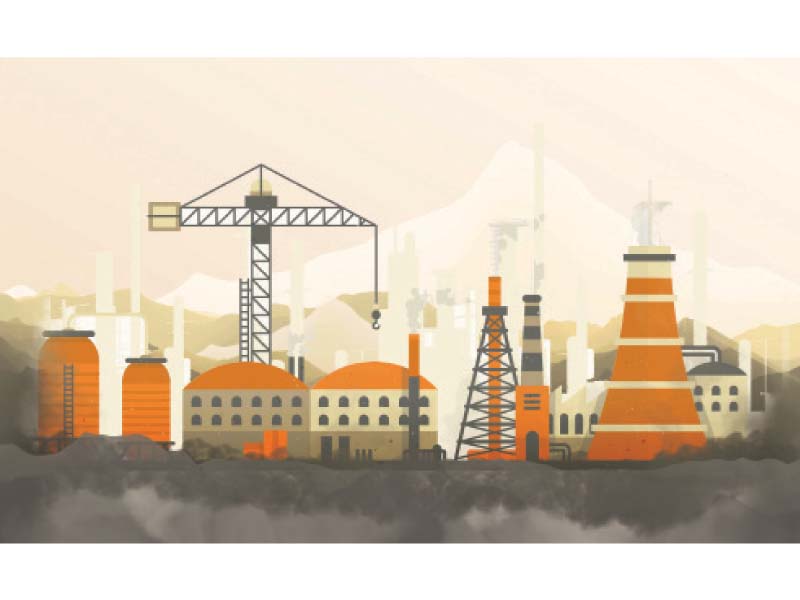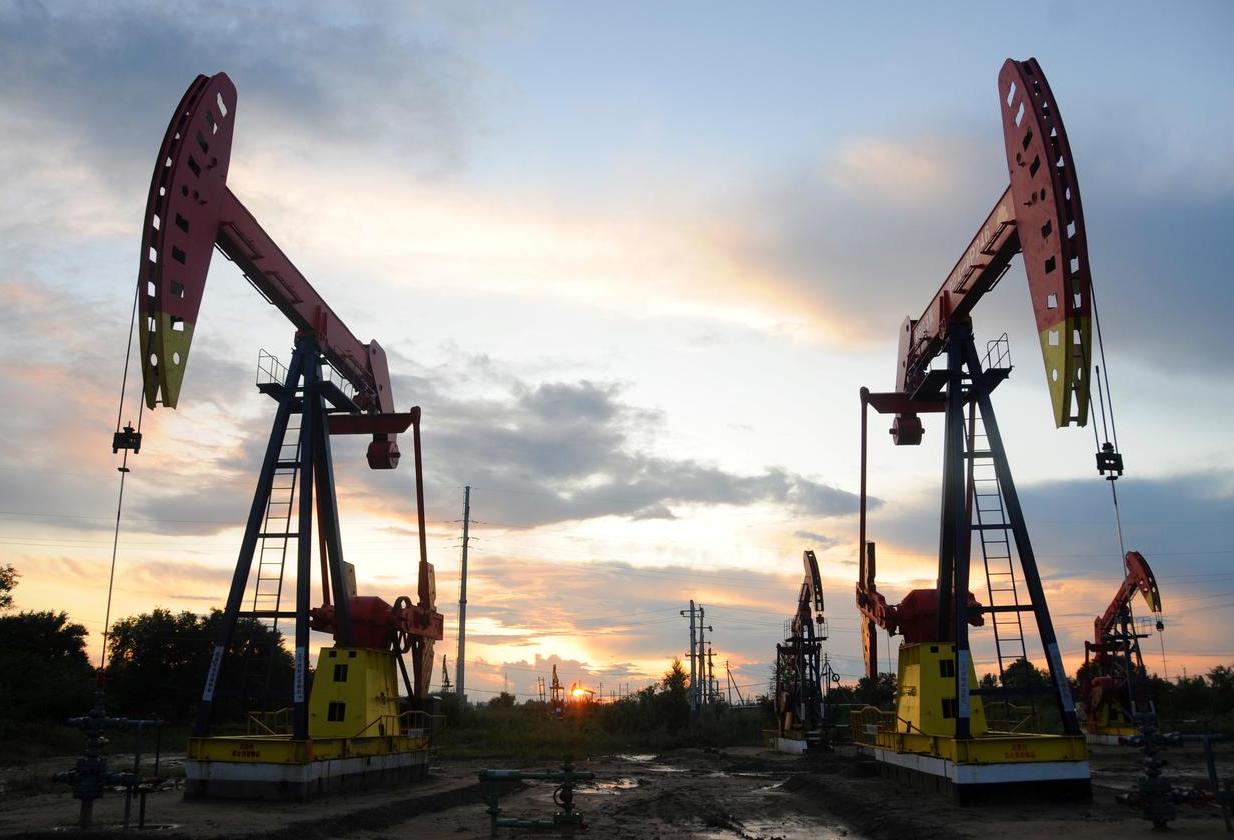
A good-sized gas discovery in Kalat
PPL MD says initial estimates show gas volume is close to one trillion cubic feet
KARACHI:
Amid a growing gas crisis in the country, Pakistan Petroleum Limited (PPL) has stumbled upon what can easily be deemed as fairly decent gas reserves deep in the Balochistan province.
The discovery of hydrocarbons, though significant in itself, promises to usher in a new chapter in the country’s oil and gas exploration sector.
More than 70 years on, the energy crisis has been persistently eating into Pakistan’s growth. Power and gas outages plaguing the domestic and industrial sectors, coupled with a ballooning circular debt, have largely hindered progress.
As the national consumption outpaced domestic production, Pakistan was forced to rely on imports to meet the energy shortfall. Recently, the country’s gas crisis intensified to the extent that the current government had to divert the costly imported liquefied natural gas (LNG) to domestic consumers.
The hefty energy imports cost the country an approximate $15-16 billion annually, which puts great pressure on the foreign exchange reserves.
But the days of burning precious foreign exchange to fuel wheels of economy may have come to an end with this latest discovery.
In an interview, PPL Managing Director Moin Raza Khan told The Express Tribune, “Last year in December, we made a good-sized discovery in the Kalat Plateau in the deeper part of Balochistan. Our gas column is huge, slight less than 1km.”
As per initial estimates, the size of gas reserves is around one trillion cubic feet.
Explaining what constitutes a good discovery, Arif Habib Limited (AHL) Head of Research Tahir Abbas told The Express Tribune, “Our local gas production is around 3.7 bcf; so any discovery with a size of 10% of our total annual production [or more] would be a slightly big discovery.”
“When we drill more appraisal wells, we can give an exact figure but based on the map that we have prepared and based on the column of gas that has come, the volume is close to one trillion cubic feet,” the PPL MD added.
Sharing details, he said that the column had around 55% of hydrocarbons and though they would have to set up a lot of plants, he was of the view that “this discovery has opened a new petroleum play in the country”.
“We are going to drill another well soon, probably in the next six or seven months. But because of the location of the field, it is difficult to develop it at the pace we would have desired.”
Raza said that this was not just a single discovery but there were many other structures as well. “The hydrocarbon habitat has been confirmed,” he said, adding that once the gas discovery was made, chances of success increased.
“PPL’s Margand findings are a landmark discovery. There will be a string of discoveries after this in this region.”
Slowdown in discoveries
Pakistan’s gas production has stagnated at around four billion cubic feet per day (bcfd) against an unconstrained demand for over 6 bcfd. To meet the shortfall, the government initiated LNG imports.
Natural gas is the country’s main source of fuel, accounting for most of the energy consumption but most of it still remains untapped. In fact, over the years gas production has been declining due to insufficient investment and regulatory challenges.
“In Pakistan, so far we have discovered gas equivalent to 10.8 billion barrels of oil and in case of oil we have discovered around 1.5 billion barrels,” said Raza.
Sharing the current situation, the AHL head of research said that Pakistan’s gas reserves as of December 2019 stood at 20,884 bcf, which means “we have just 16 years of gas reserves available”.
Abbas said that since “we have not had any major discovery in the past 15 to 20 years, there has been a slowdown in gas production”. Tal block was the last major discovery in 2002, he added.
“We have a significantly lower reserves replacement ratio because we have not made any major discovery in the past 15 to 20 years.”
Echoing similar remarks, Raza said that over the years many discoveries have been made, such as Uch, Mari, Kandhkot and Adhi to name a few, and are still being made but the size of those discoveries is decreasing.
After the discovery of Sui gas field, exploration activities kicked off in full swing and from 1952 to 1960, 4.9 billion barrels of oil equivalent gas had been discovered, he added.
“So, about 45% of the gas discovered in Pakistan was already found within 10 years after the Sui discovery.”
After 1960, the curve somewhat flattened but further exploration activities started and “we kept adding to the overall reserves”.
However, with the passage of each year, the size of the discoveries made was decreasing.
“Pre-2001, the average discovery size was 400 bcf but post-2001, the average was 64 bcf,” said Raza.
Because of the infrastructure and, it was evident, due to the early discoveries, where the oil and gas corridor was, all the exploration and production activities were focused on this corridor.
“We have been working for 40-50 years in the same region.” But now since the reserves’ findings were diminishing, there was a need to move away from the traditional oil and gas area, he stressed.

Frontier regions
According to international assessments, Balochistan offers great potential for the oil and gas sector as it boasts of extensive oil and gas reserves.
In a bid to move away from the conventional approach, PPL adopted an aggressive strategy as it moved to the frontier zones for further exploration activities.
Frontier zones are generally the remote regions, which are far from most markets and established infrastructure. They are areas with harsh climates and difficult-to-work-in environments.
Talking about the costs and difficulties of exploring in the frontier areas, the PPL chief said that along with costs the risk also increases.
“There are three criteria to diversify exploration; cost, reward, risk. The risk refers to the chances of success. In the traditional oil and gas exploration, the chance of success is 33%. But in the frontier area, the chance of success is 10%.”
As the terrain becomes difficult, the cost of exploration also racks up. Sharing rough estimates, Raza said drilling in Sui, to a depth of around 1,300 to 1,400 metres, costs $1.5 to $2 million.
In the Gambat South area, as the depth increases to beyond 3,000 metres, the cost incurred is around $6 to $7 million.
Due to operational challenges in the Potwar region, the time to explore increases, hence the cost mounts to $10 to $12 million.
But in the frontier regions, the cost incurred surges to $20 to $25 million while at the same time the risk also increases.
He revealed that during the last 11 years, “we have drilled 11 wells in the frontier area and made no discovery”.
That was until the discovery from its exploratory well Margand X-1 in the block.
“When we were testing the well, it was snowing. It was a discovery in a region that can be converted into a hill station, a dream that we have for the future,” he added.
Pakistan’s exploration activities are divided into zones under the petroleum policy. Elaborating on this, Abbas said that there are different risks and rewards for each of the zones.
Some zones, which include risky areas of Balochistan and Khyber-Pakhtunkhwa, are defined as high risk because the probability of hitting oil and gas reserves is a bit low.
“The surrounding geography of the area is a bit dangerous so it is not easy to work or drill in those areas.”
Raza further elaborated, “Eventually, when we develop this field with about 20 to 30 wells and they start producing gas and serving the people of Balochistan, it will generate a lot of economic activity for the locals.”
Talking about the potential impact, Abbas said, “If we are able to make a big discovery, it will have an impact on our balance of payments and imports, but the quantum needs to be big enough to replace our dependency on international oil and RLNG.”
Though a bit sceptical, he said, “We can replace some of our reliance on the imported LNG, if we make any big gas discovery.” However, even then a major discovery will not immediately replace RLNG.
PPL is not the only exploration and production company working in the frontier regions, as Oil and Gas Development Company and Mari Petroleum have also ventured into the area and are working aggressively to look for opportunities.

Hurdles
According to the US Geological Survey, Pakistan has petroleum resources of 164 million barrels of oil and 24.6 trillion cubic feet of natural gas.
Considering this, if the government focuses on stepping up indigenous production, Pakistan could significantly curtail its import bill.
A paper published by the US think tank suggested that Pakistan should consider ways to boost investment in domestic exploration and development of these resources.
Commenting on this, the PPL MD said, “It is important to have the financial muscle available to continue this kind of activity, which is marred by the circular debt issue.”
He lamented that the pending dues of the company hindered a lot of its progress.
“We have a liquidity crunch. If the capital becomes available to us right now, we can leapfrog exploration activities in this area,” he added.
He was of the view that if this 1 tcf field is developed, this is going to produce 300 to 400 million cubic feet of gas per day.
“Pakistan is importing LNG at a very heavy cost; you subtract 400 from that, you can save significant foreign exchange.”
He added that if the success of Sui could be repeated, considering the technology available today, Pakistan could make great strides as it still remains largely unexplored.
Building on the same, Abbas said, “I think there is some big potential available in those areas, which is still untapped.”
He said that previously the law and order situation was a hindrance to venturing into the Balochistan area for exploration activities, but now with things largely under control, the companies are exploring those areas.
The AHL head of research added that the government is working on the latest petroleum policy but it should incentivise the operators and exploration and production companies. The government should give them some tax holidays on production.
“There are several incentives in the last policy that are still applicable but the government should work to make them a more lucrative offer,” he remarked, adding that the policy is expected to be announced soon.
Published in The Express Tribune, September 9th, 2020.
Like Business on Facebook, follow @TribuneBiz on Twitter to stay informed and join in the conversation.




















COMMENTS
Comments are moderated and generally will be posted if they are on-topic and not abusive.
For more information, please see our Comments FAQ